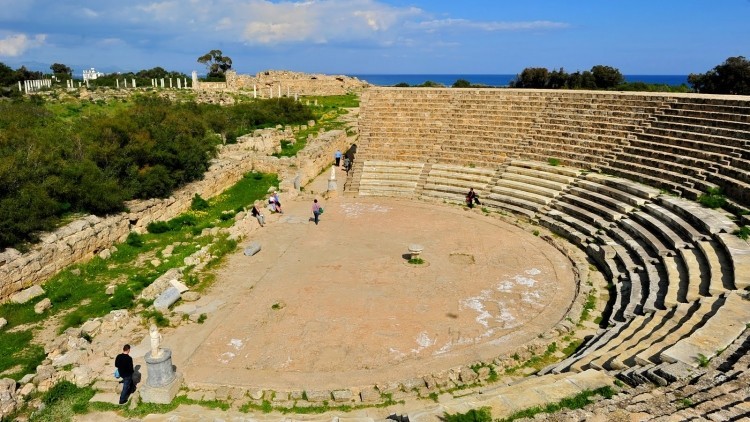The Ancient City of Salamis was initially established as an Achaean colony, and Tekfros, the son of Telamon, who later became the King of the Greek island of Salamis, took his place as the legendary founder of the city.
Taking his comrades-in-arms from the Trojan War and a group of people he had captured in this war with him, Tekfros set foot on the Cyprus peninsula in 1184 BC from the place known as "Achaion Akte" (Achaean Coast) on the northern coast of the Karpaz Peninsula, and after staying there for a while, he founded a city in the area where the Salamis Ruins are located today. After the Assyrian domination that came to the island in 707 BC, the administration of the island passed into the hands of Elevton, the King of Salamis, and in 411 BC, Evagoras, a member of the Tekfros family, seized the Kingdom of Salamis with the help of his supporters from Cilicia. Having strengthened the walls of the Ancient City of Salamis and established a fleet, Evagoras set out on the island in 707 BC. After 391, he dominated almost the entire island. Later, in 380 BC, the Parthians besieged the city of Salamis and an agreement was reached on the condition that Evagoras would remain only as the King of Salamis and pay taxes to the Parthians.
After Evagoras was killed in 374 BC, the Kings who succeeded him remained loyal to the agreement Evagoras made with the Parthians until the time of Alexander the Great. During the Alexander Period, Pnytagoras, who became the King of Salamis, helped Alexander the Great during the siege of the city and after Alexander's sudden death, Salamis had to change hands constantly due to the war that started between his commanders due to the sharing of land and dominance and lasted for years. In 294 BC, Ptolemy captured the island and founded his own dynasty here.
As a result, the capital of the Cyprus peninsula was no longer Salamis and the new capital became Paphos until the 4th century AD. The ancient city of Salamis was built in 294 AD. Earthquakes between 76 and 77, the Jewish rebellion in 116 AD and later the tidal events caused the city to completely collapse and Emperor Constantine II reduced the size of the city and rebuilt it. The city's new name changed to Constantia. He named it Constantia. The newly founded city, Constantia, became the capital of the Cyprus peninsula again between 368 and 403 AD.
After 647 AD, everyone left the city due to the Arab raids that continued intermittently, earthquakes and the clogging of the port with sand and mud. Thus, a settlement was formed where today's Gazimağusa city stands.
